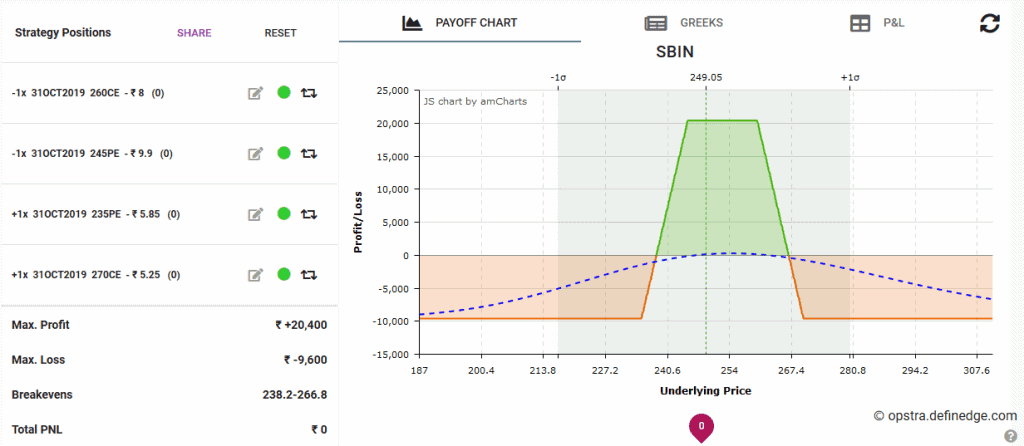Unlocking the Secrets to the Most Successful Options Strategy

Options trading can be a lucrative form of investment, but it also comes with a high degree of risk. To succeed in this field, having a solid options strategy is crucial. In this article, we will dive into the secrets of the most successful options trading strategy – the Iron Condor. We will take a closer look at what options trading is, the importance of a solid strategy, analyzing the most successful options strategy, and implementing the Iron Condor strategy.
Understanding Options Trading Strategies
Before getting into the Iron Condor strategy, it’s essential to understand what options are and the types of options that are available for trading.
What are Options?
Options are financial instruments that give a trader the right, but not the obligation, to buy or sell an underlying asset at a predetermined price and time. They are contracts between two parties, referred to as the buyer and the seller. The buyer pays a premium for the option, while the seller receives the premium. Options are traded on public exchanges and can be used to speculate or hedge against market movements.
Types of Options: Calls and Puts
There are two types of options – calls and puts. Call options give the buyer the right to buy the underlying asset at a predetermined price, while put options give the buyer the right to sell the underlying asset at a predetermined price. Both types of options have expiration dates, which is the date by which the option must be exercised or it will expire worthless.
Basic Options Trading Terminology
There are a few key terms to understand when it comes to options trading. The strike price is the price at which the underlying asset can be bought or sold. The premium is the price paid for the option, and the expiration date is the date by which the option must be exercised or it will expire worthless. Additionally, the option’s intrinsic value is the difference between the current price of the underlying asset and the strike price.
Options trading can be a complex and risky endeavor, but it can also be a way to potentially profit from market movements. Traders use a variety of strategies to try to maximize their profits and minimize their risks.
One popular options trading strategy is the Iron Condor. This strategy involves selling both a put and a call option on the same underlying asset with the same expiration date. The strike price for the call option is higher than the current market price of the asset, while the strike price for the put option is lower than the current market price.
This creates a range of prices in which the trader can profit, as long as the market price of the asset stays within that range.
However, the Iron Condor strategy also comes with risks. If the market price of the underlying asset moves outside of the range created by the strike prices of the options, the trader can experience significant losses. Additionally, the trader must pay attention to the expiration date of the options and make sure to close out the positions before they expire.
Overall, options trading can be a lucrative way to potentially profit from market movements, but it requires a significant amount of knowledge and experience. Traders should always do their research and understand the risks involved before entering into any options trading strategy.
Wanted to learn everything from basics to advanced strategies in more practical ways, then enroll in our Option Strategies: A Mentorship Program.
The Importance of a Solid Options Strategy
Trading options without a strategy can be a recipe for disaster. A solid options trading strategy involves risk management, consistent profits, and adapting to market conditions. In this article, we will explore each of these components in greater detail.
Risk Management
The first component of a solid options trading strategy is risk management. This refers to the steps a trader takes to minimize potential losses. One important aspect of risk management in options trading is position sizing, which involves determining the appropriate amount of capital to allocate to each trade.
This can be done by considering factors such as the trader’s risk tolerance, the size of their trading account, and the level of volatility in the market. Another important aspect of risk management is the use of stop-loss orders to limit potential losses. These orders allow traders to exit a trade if it moves against them, thereby limiting their exposure to risk.
There are several other risk management techniques that options traders can use, including diversification, hedging, and using options spreads. Diversification involves spreading capital across multiple trades in order to reduce the impact of any single trade on the overall portfolio. Hedging involves taking positions that offset the risk of other positions in the portfolio. Options spreads involve buying and selling options contracts in combination in order to limit risk and increase the probability of profit.
Consistent Profits
Consistent profits involve finding a trading strategy that can generate steady returns over time. This doesn’t mean that every trade will be a winner, but rather that over a series of trades, the profits will exceed the losses. There are many different trading strategies that can be used to generate consistent profits in the options market. Some traders prefer to use technical analysis, while others rely on fundamental analysis. Some traders use a combination of both.
One popular options trading strategy is the covered call strategy. This involves buying a stock and then selling a call option on that stock. The premium received from selling the call option provides some downside protection for the stock, while also generating income for the trader. Another popular strategy is the iron condor, which involves selling both a call spread and a put spread on the same underlying asset. This strategy generates income from the premiums received on both spreads, while also limiting risk.
Adapting to Market Conditions
The options market is constantly evolving, and a successful trader must be able to adapt to changing market conditions. This involves staying up-to-date on market news and trends, and adjusting one’s trading strategy accordingly. For example, if a trader notices that a particular stock is experiencing increased volatility, they may adjust their position sizing or use different options strategies to take advantage of the volatility.
Another important aspect of adapting to market conditions is managing one’s emotions. It can be easy to get caught up in the excitement of a rapidly moving market, but this can lead to impulsive trading decisions and increased risk. Successful options traders maintain a disciplined approach to trading, and are able to remain calm and focused even in the face of market volatility.
In conclusion, a solid options trading strategy involves risk management, consistent profits, and adapting to market conditions. By implementing these components into their trading approach, options traders can increase their chances of success in the options market.
Analyzing the Most Successful Options Strategy
The Iron Condor strategy is widely considered one of the most successful options trading strategies. It involves selling both a call and a put option on the same underlying asset, each with a different strike price. The idea behind this strategy is to generate profits from both the call and put premiums, while limiting potential losses by choosing strike prices that are far away from the current price of the underlying asset.
The Iron Condor Strategy
The Iron Condor strategy involves selling both a call and put option on the same underlying asset with a short expiration date. These options are sold at a higher strike price than the current price for the call option and at a lower strike price for the put option. This creates a range for the underlying asset price where the trader captures the premiums of both options.

Key Components of the Iron Condor
The key components of the Iron Condor strategy include selecting both the call and the put options, determining the strike prices, and selecting the expiration dates. The trader must also be prepared to manage the trade should the underlying asset price move outside of the range defined by the options.
Pros and Cons of the Iron Condor Strategy
Some of the advantages of the Iron Condor strategy include the ability to generate consistent profits, limited potential losses, and flexibility to adjust to changing market conditions. However, a major drawback of this strategy is that it requires a significant amount of capital to initiate the trade.
Implementing the Iron Condor Strategy
To implement the Iron Condor strategy, a trader must select the right stocks or underlying assets, determine the strike prices and expiration dates, and manage the trade as the underlying price moves.
Selecting the Right Stocks
When selecting stocks to trade, it’s important to choose ones with high liquidity and low volatility. Additionally, the trader must ensure that the underlying price is within the range defined by the options.
Determining Strike Prices and Expiration Dates
Choosing the strike prices and expiration dates involves a combination of technical and fundamental analysis. The trader must consider the current trends in the market, the implied volatility of the options, and the desired risk-reward ratio for the trade.
Managing and Adjusting the Iron Condor
Managing and adjusting the Iron Condor involves monitoring the underlying price and adjusting the strategy as needed. The trader must have a plan in place for when the underlying price moves outside of the range defined by the options.
Options Strategies – A Mentorship Program
If you’re an options trader looking to take your skills to the next level, then our Options Strategies: A Mentorship Program is the perfect opportunity for you. With our program, you’ll learn advanced option hedging strategies and adjustments through live market support, giving you the hands-on experience you need to succeed.
By signing up for our program, you’ll gain access to a team of experienced options traders who will guide you every step of the way. You’ll learn how to identify the right options strategies for different market conditions, how to manage risk effectively, and how to adjust your positions as needed.
Plus, with our live market support, you’ll have the opportunity to ask questions and get real-time feedback on your trades. This personalized support will help you develop the confidence and skills you need to take on even the most challenging market conditions.
Don’t miss out on this valuable opportunity to take your options trading to the next level. Sign up for our Options Strategies: A Mentorship Program today and start your journey toward success!
Conclusion
The Iron Condor is a powerful options trading strategy that can generate consistent profits while limiting potential losses. However, it requires a solid understanding of options trading, as well as a significant amount of capital to implement. By following the key components of the Iron Condor strategy and having a plan in place for managing the trade, a trader can successfully unlock the secrets to the most successful options strategy.
Some Frequently asked questions:
What is an options trading strategy?
An options trading strategy is a plan for how you will use options to trade stocks or other assets. A good strategy will take into account your risk tolerance, investment goals, and the current market conditions.
Why is a solid strategy important for options trading?
Options trading can be a risky proposition, so it’s important to have a solid strategy in place to minimize your losses. A good strategy will help you to identify the right opportunities, manage your risk, and maximize your profits.
What is the most successful options trading strategy?
The most successful options trading strategy is the Iron Condor. This strategy is designed to generate profits in a range-bound market. It involves selling both a put and a call option, with the same strike price and expiration date. This creates a “condor” shape on the profit/loss diagram.
How do I implement the Iron Condor strategy?
To implement the Iron Condor strategy, you will need to:
1. Choose a stock that you believe will trade in a range-bound market.
2. Select two strike prices that are close together, but outside of the expected price range.
3. Sell one put option and one call option, with the same strike price and expiration date.
4. Collect the premium from both options.
What are the risks of the Iron Condor strategy?
The main risk of the Iron Condor strategy is that the stock price will move outside of the expected range. If this happens, you will lose money on both options. However, the risk of loss is limited to the premium that you collected when you sold the options.
The Iron Condor strategy is a versatile and effective options trading strategy that can be used to generate profits in a range-bound market. However, it is important to understand the risks involved before you implement this strategy.




